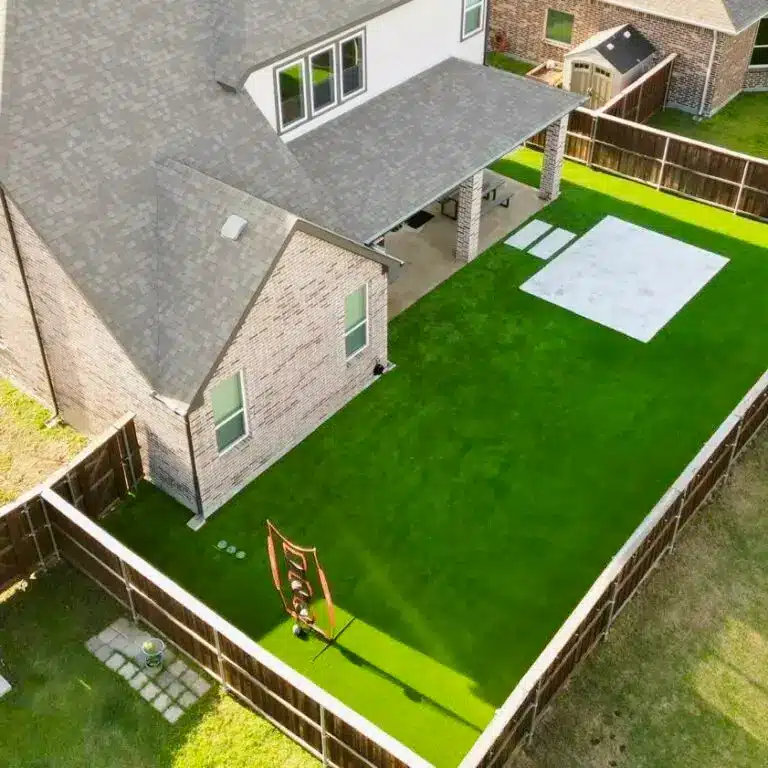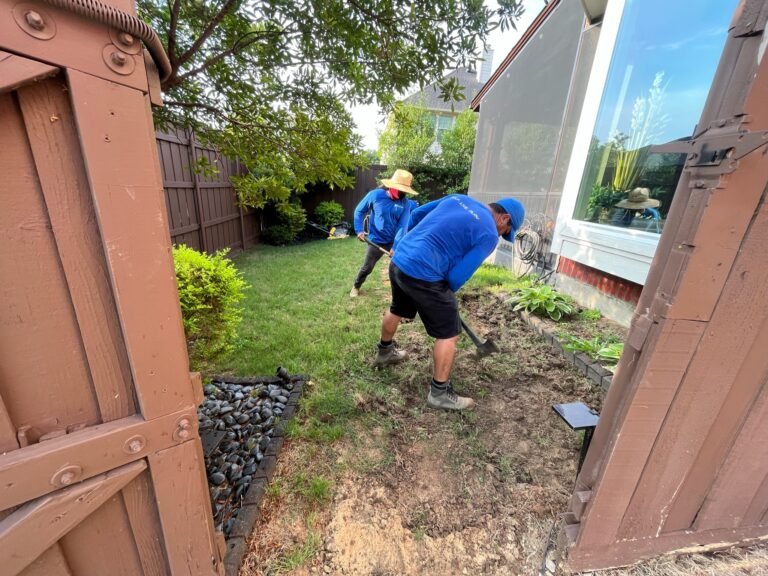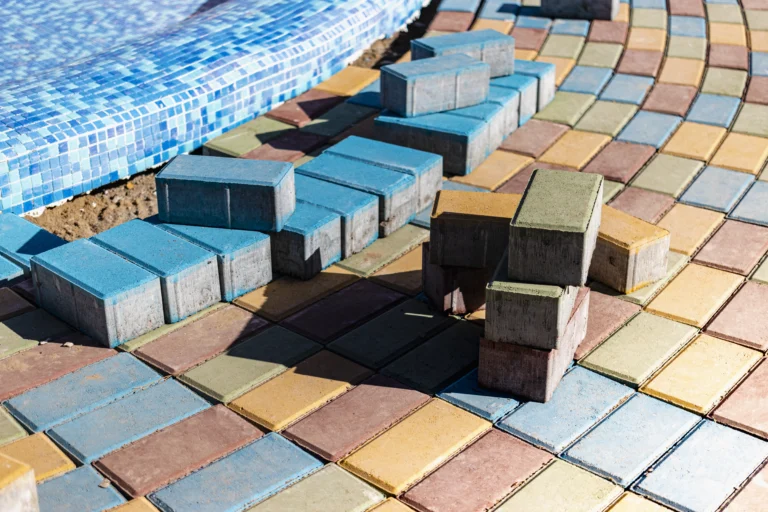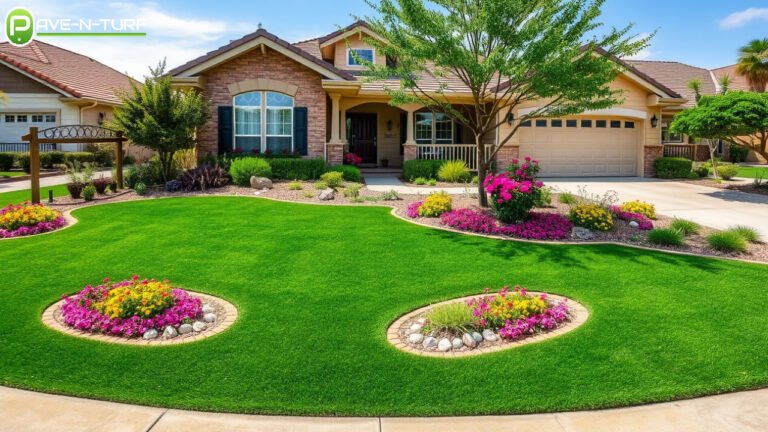Benefits of Artificial Grass vs. Natural Grass: A Comprehensive Comparison

In recent years, homeowners and facility managers have been gravitating towards artificial grass as a popular alternative to natural grass. The debate between the two has developed, as both types of grass present unique advantages and disadvantages. Deciding between artificial and natural grass involves assessing factors such as cost, maintenance requirements, environmental impact, and personal preferences.
Artificial grass offers a plethora of advantages when compared to its natural counterpart. Among its most notable benefits, this grass type demands little to no maintenance, making it an ideal choice for those with busy lifestyles who do not have time to commit to regular lawn care. Additionally, artificial grass is resilient and built to withstand harsh weather conditions, ensuring an appealing aesthetic all year round.
Conversely, natural grass has its own set of desirable qualities. Apart from its undeniable beauty, natural grass provides a range of ecological benefits like air purification, oxygen production, and support for biodiversity. However, it is essential to weigh these benefits against factors like ongoing care needs and potential water consumption when making an informed decision. Understanding these factors will allow homeowners and facility managers to select the right grass type for their specific requirements and desired aesthetics.
Comparative Analysis of Artificial and Natural Grass
Cost Comparison
When comparing the costs of artificial grass and natural grass, one must consider both the initial installation costs and long-term maintenance expenses. Generally, the installation cost of artificial grass is higher than that of natural grass. However, it’s important to note that synthetic turf can last up to 20 years with minimal maintenance, which can offset the higher initial cost over time.
| Type | Installation Cost | Long-term Maintenance Cost |
|---|---|---|
| Artificial Grass | Higher | Lower |
| Natural Grass | Lower | Higher |
Maintenance Requirements
Artificial grass has significantly lower maintenance requirements than natural grass. Synthetic turf doesn’t need to be watered, mowed, or fertilized, reducing both time and monetary investments in maintenance. Natural grass, on the other hand, requires regular watering, mowing, and fertilization to stay healthy and vibrant.
- Artificial Grass
- No need for watering, mowing, or fertilizing
- Occasional cleaning with water or a leaf blower
- Natural Grass
- Regular watering, mowing, and fertilization
- Potential need for pesticides, fungicides, and herbicides
Environmental Impact
Considering the environmental impact, there are pros and cons to both artificial grass and natural grass. Synthetic turf saves water by eliminating the need for irrigation. Additionally, it doesn’t require the use of pesticides, fertilizers, or other chemicals that can harm the environment. However, artificial grass is made from non-biodegradable materials, which could contribute to landfill waste when disposed of.
Natural grass, on the other hand, absorbs carbon dioxide and produces oxygen, contributing positively to air quality. But the maintenance of natural grass, including water consumption and the use of chemicals such as fertilizers and pesticides, can have negative environmental impacts.
Aesthetic and Functional Differences
In terms of aesthetics, some people prefer the appearance and feel of real grass over synthetic turf. However, artificial grass has come a long way in recent years and is now designed to closely resemble the look and texture of natural grass. Additionally, artificial grass can maintain a consistent appearance year-round, even in areas that experience drought or harsh winters.
Functionally, artificial grass provides a more consistent surface, making it safer for sports and recreational activities. It also drains more efficiently than natural grass, preventing puddling and water-logging issues. Natural grass, however, can sometimes provide a softer and more natural surface for children and pets to play on.
Advantages and Disadvantages of Each Option
Benefits of Artificial Grass
Low maintenance: Artificial turf requires very minimal upkeep compared to natural grass. No need for mowing, watering, or the use of fertilizers making it perfect for those living busy lifestyles.
Long lifespan: The average lifespan of artificial grass is about 15-20 years, sometimes even more. This saves homeowners from the effort and cost of reseeding and restoring natural lawns over the years.
Suitable for play areas: Artificial turf provides a smooth, even surface that is great for play areas. It is safer for children to play on compared to natural grass which could be uneven and cause accidents.
Benefits of Natural Grass
Environmental benefits: Natural grass is eco-friendly and offers significant environmental benefits, such as improving air quality by absorbing carbon dioxide, producing oxygen, and filtering pollutants.
Cooling effect: Natural grass has a natural cooling effect on the environment, helping to lower surrounding temperatures and reducing the need for artificial cooling methods.
Soil preservation: Natural grass lawn contributes to soil preservation, helps prevent erosion, provides a habitat for beneficial insects, and supports the local ecosystem.
Downsides of Artificial Turf
Heat: Artificial grass has a tendency to absorb heat, making it uncomfortably hot to walk or play on during hot summer days.
Environmental concerns: The production, installation, and disposal of artificial turf have an environmental impact, contributing to carbon emissions and taking up space in landfills.
Cost: Artificial turf can be an expensive upfront investment, although long-term savings in maintenance may offset this.
| Artificial Turf | Natural Lawn | |
|---|---|---|
| Watering | None | Required |
| Mowing | None | Required |
| Fertilizer | None | Required |
| Feel | Less natural | More natural |
| Air Quality | No impact | Improves |
| Pests | Less susceptible | More susceptible |
| Environmentally Friendly | Less | More |
Downsides of Natural Lawn
Maintenance: Natural grass requires consistent watering, mowing, and use of fertilizers, which can be time-consuming and costly.
Pests: Natural lawns can attract a variety of pests, which can cause damage to the grass and require treatment with pesticides.
Less safe for play areas: Natural grass lawns can be uneven and riskier for children to play on, with a higher chance of accidents occurring.
Soil compatibility: Natural grass requires appropriate soil conditions to thrive, and its success may be dependent on the local climate and availability of resources.






